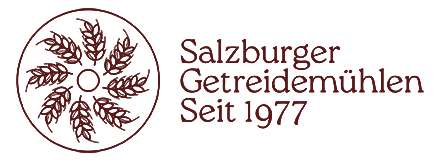
Strictly speaking, pseudocereals are not cereals at all, but grains from plants that do not belong to the true cereal family.
belongs to the goosefoot family and played a major role in the diet of the Incas. In recent years, it is also promoted in our country as a particularly nutritious food. However, if not prepared properly, quinoa should be used with caution due to its high content of saponins. We recommend that you wash them well and let them germinate for three to five days, changing the water several times, and only then cook them. Cooking in a pressure cooker is also said to improve digestibility and also minimize lectins. As an alternative to sprouting, you can also acidify quinoa with whey for 24 hours and then cook it. Traditionally, quinoa was mostly eaten fermented.
is also an ancient cultivated plant of the Incas and botanically belongs to the foxtail family. Compared to quinoa, amaranth is said to contain fewer lectins and no saponins, but does contain oxalic acid. You should still soak it or sprout it and cook it well (even better in a pressure cooker). Quinoa and amaranth we use now no longer to rarely, our heart beats more for the use of other and especially our native cereals and pseudocereals. What to avoid in any case are puffed quinoa and amaranth, the industrial heating requires so much heat and pressure that they are completely denatured.
belongs to the knotweed family, but it could also be called a grain crop. It is native to Asia, but was also grown in Europe, but unfortunately displaced by the potato in the 18th century. Buckwheat is very undemanding in cultivation and for a long time was a “poor man’s food”. It has always been considered very healthy and contains, for example, abundant lysine (an amino acid important for collagen and bone metabolism).
Traditionally, it has been established, for example, in Russia to roast the buckwheat. This gives it a great nutty flavor and reduces about 50 percent of the phytic acid.
In Russian supermarkets or Internet stores you can buy buckwheat already roasted as “kasha-. If you want to roast the green buckwheat yourself, you can bake it in the oven at 120 to 130 degrees convection for 1.5 to 3 hours, just like the mush flour. After cooling, it can be boiled briefly with twice the amount of cold water. However, the purchased roasted buckwheat turns out better, in our experience. In Russia, buckwheat is popular as a soup ingredient, served as a side dish, or cooked in milk to make a kind of breakfast porridge.
Instead of roasting, you can lightly sprout buckwheat. However, for this you need the green buckwheat, which you can get in the drugstore or health food store. To prevent it from becoming too slimy during soaking, leave it in the water for only one to three hours and drain it on a sieve. After two days it begins to germinate. So that it does not begin to smell musty, it is rinsed several times a day. After two to four days you can cook and eat it. Of course, every now and then you can eat a buckwheat porridge without any pre-treatment, in which case we recommend washing it well and cooking it in a homemade broth. Buckwheat porridge is also a good side dish for fish, meat and vegetables. However, the taste is not for everyone. However, the buckwheat flour should be milled as fresh as any other grain. The dough for pancakes is best acidified with a little whey or buttermilk and left overnight at room temperature.
Address:
Gasteigweg 25,
5400 Hallein
Austria
Opening hours:
Monday to Thursday: 09 – 16:00
Friday: 09 – 12:00
Contact:
Phone: +43 6245 83282
E-mail: info@agrisan.at
Address:
Gasteigweg 25,
5400 Hallein
Austria
Opening hours:
Monday to Thursday: 09 – 16:00
Friday: 09 – 12:00
Contact:
Phone: +43 6245 83282
E-mail: info@agrisan.at

